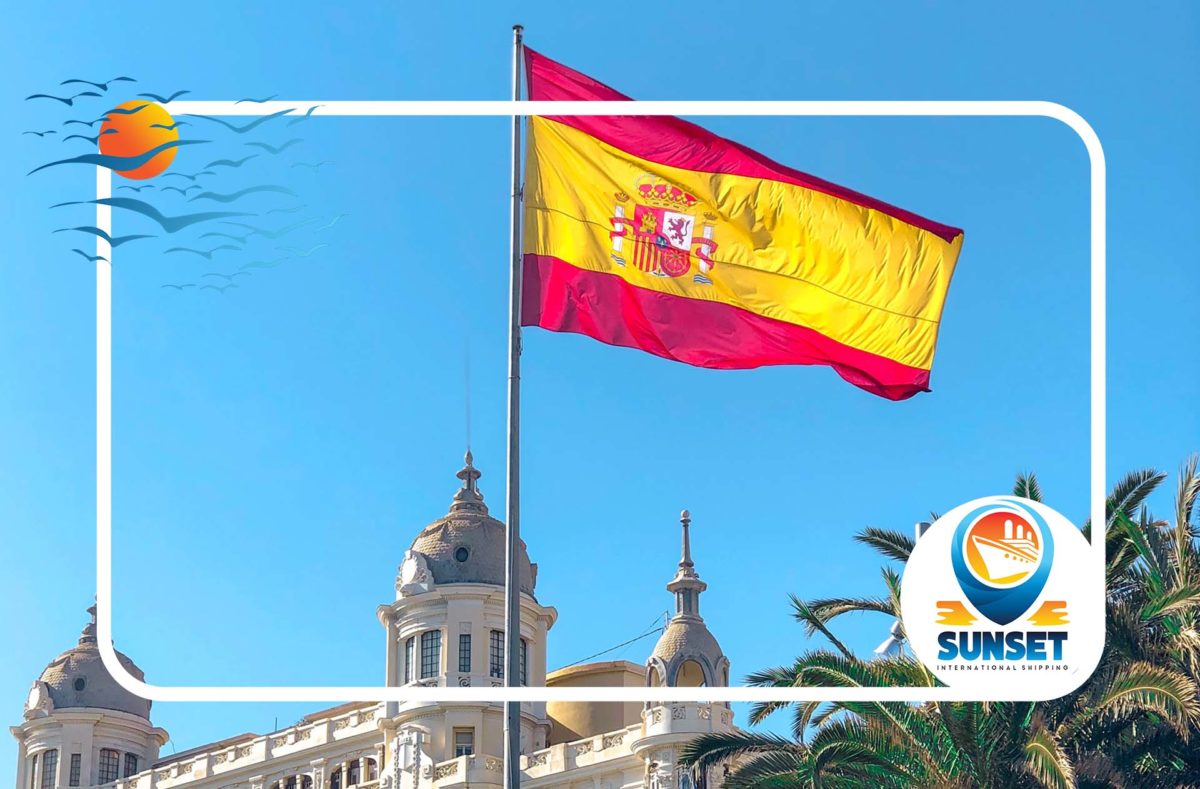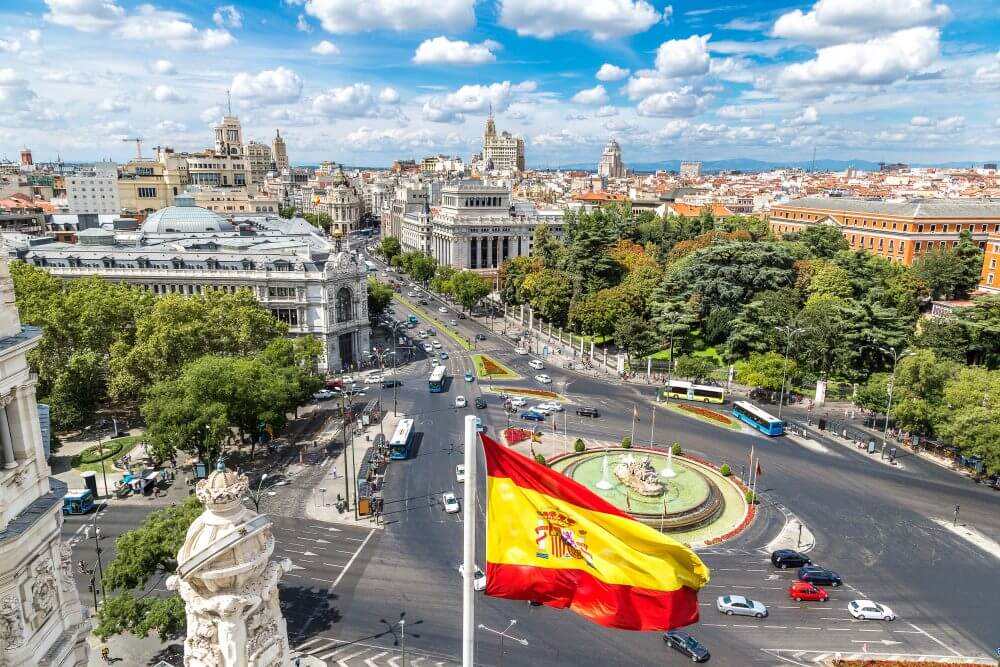Moving to Spain is more than enjoying the weather and its beautiful beaches. English is not widely spoken, so you’ll need to learn at least a few words and phrases of the third most widely spoken language in the world – Spanish. Locals are friendly, so get used to kisses on both cheeks when greeting women or an embrace, or a pat on the back between men.


Dealing with Spanish bureaucracy, however, is quite the opposite – it can be extremely annoying. No matter how many documents and copies you bring, there are always some missing. If you do decide to make this big step and live in this beautiful country, here are the things to consider.
The Cost of Living is Affordable for an American
Spain is considered to be among the most affordable Western European countries, which is a huge advantage. Its affordability makes it a popular destination for settling in, along with a beautiful climate, especially in the northern part.
When compared to other countries in Western and Central Europe and the world, the consumer prices, rents, restaurant prices, and the groceries are all much lower here. The cost of living varies in different regions, though. The average rent of a one-bedroom apartment in the city center ranges from €600 to €700 and from €450 to €500 outside the city center. Southern cities are generally cheaper than their northern counterparts. The salaries range from €400 to €13,900, and the median salary per month is €3,146.
Electricity is expensive and will make up a big portion of your utility costs. Water is safe for drinking in most of the country, but you may encounter a shortage of water supplies in some parts. This issue is particularly present in the south, where during the summer season, there may be restrictions on water usage. But the Internet is among the fastest in Europe, which is especially important for digital nomads.


Housing and Renting Prices – You Can Own a Home with no Limitations
As everywhere around the world, the prices of real estate differ depending on the location. Homes in metropolitan areas are less expensive than in the city centers. The average price for an apartment located in Madrid amounts to $5,000 per square meter, which is more than in Barcelona, where the average price is around $4,000 per square meter. The most expensive square meter of living space is in a resort of San Sebastian in the Bay of Biscay and amounts to €3,383.
Monthly rent in Barcelona can amount to $1,700 and renting a place in Madrid can cost approximately $1,600. These towns are ranked the most expensive in Spain, along with Bilbao and Palma de Mallorca. Even though the property prices are rising, they are still more affordable than in other parts of the world when compared to the income of the locals.
As a foreigner, you can own a home in this beautiful country with no limitations if you have proper documents or visas, even if you are coming from a non-EU country. However, if you purchase a property worth more than €500,000, you will be granted a “golden visa,” which enables you to live here permanently.


Moving to Spain and Becoming a Citizen
Getting a residence is easier for EU-citizens than for non-EU citizens, who need to undergo a long process. However, after five years of residence, you are eligible for permanent residence, whereas, after ten years, you are entitled to Spanish citizenship.
The tax system consists of various taxes on national and regional levels. Taxes paid on income are based on a progressive method, which means that as the income increases, so does the tax rate. The standard rate of VAT is 21%, but there are some deductions for specific goods, whereas some services and goods are even exempt from it, such as the resale of a property, welfare, education, health services, and others. The foreigners are protected from double taxation by agreements signed with 93 countries, including the USA.
The public healthcare is highly valued and free for legal residents, with some minor fees paid on the spot. The banking system is compatible with the international financial network and consists of private banks and savings banks owned by the state.


Shipping Items to Spain
Shipping items to Spain is rather convenient due to its favorable geographical position. Your belongings will be subject to customs and you have to declare items that are listed as restricted. There are items that are prohibited, such as meat and dairy products, fruit and vegetables, protected plants and wild animals, and the usual forbidden items like narcotics. The restricted items are subject to authorization, such as ivory and other hunting trophies, certain medication, and cosmetics. Make sure you do not exceed the prescribed quantities in your shipping container, and if you’re shipping your car, make sure you fulfill the necessary requirements.
The relocation process is easier for EU citizens, as they are exempt from import duties. But non-EU citizens can also import non-commercial goods free of customs within the prescribed value and quantity. Once your items arrive here, ask the company providing you with international moving services if it offers storage options for your belongings.
Work and Residence Permits for an Expat
American citizens can stay up to three months without a visa, but they cannot work, study or live without obtaining one before they come. After living in the country for five years, you are entitled to permanent residence, which will enable you to live and work not only in Spain but also in other EU countries.
After ten years, you can apply for citizenship, granting you all the rights, including the right to vote, but you must renounce American citizenship. If you are moving for love and get married to a Spanish citizen, you can obtain it even earlier. And all foreigners have to obtain NIE (ID number for foreigners). If you’re moving with your children, then you need to get proper documents for international relocation for them as well.
Visas for study or research purposes are subject to the same procedures of obtaining authorization for a visa before actually applying for it. Highly skilled workers, such as managers, can apply for the European Blue Card, which is similar to the US Green Card. Self-employed individuals or entrepreneurs need to apply for visas, just like other employees, but the documents required are somewhat different.
Health Requirements
You are not required any specific vaccines to enter the country, but you should have received the standard childhood and adult vaccines. However, you should check with the doctor whether to receive additional vaccines four to six weeks before traveling, such as for rabies, as this illness can be contracted from bats in Spain.
Moving with Pets
If you are bringing your pets, they need to be properly vaccinated against rabies, so younger animals that are not old enough to be vaccinated will not be able to enter. If the country you are coming from has a risk of rabies, the additional serological test is required from an EU-certified lab. Also, you can only bring up to five pets with you unless they are meant to participate in a competition. They all need to have proper identification documents and the ones born before 2011 must have a readable microchip or a tattoo.
When moving by air, check the travel regulations with your airline and make sure your pet has a proper carrier. Other animals are easier to move, as they only need the right veterinary certificate. Birds coming from non-EU countries must be vaccinated and isolated. If you’re moving by sea, make sure pets are properly secured and safe during the trip. And keep in mind that all pets should be registered in the municipality of your residence even though the controls are not rigorous.
Tip for Getting Around – Use Public Transportation
The country is well connected through a network of high-speed trains. The cities have either trams or metros as public transportation and bigger ones have both. Private companies are in charge of bus transportation. There are taxi services and car transport apps are available in Barcelona and Madrid. And most importantly, public transportation is quite affordable.
Driving and Traffic Problems
The minimum age for driving is 18. If you have a driver’s license and you are a citizen of the EU, you will be able to use it for the first two years of your residency. After that, you have to apply for a Spanish license.
People drive on the right side here and overtake on the left. Seatbelts are obligatory for all the passengers in the car. Bikers and cyclists have to wear a helmet. Every car has to be equipped with a warning triangle and a reflective jacket. Mobile phone use while driving is only allowed with a hands-free system. The maximum level of alcohol permitted is 0.5.
Traffic jams in large cities are usual and start early in the morning.


Popular Spanish Cities and Places
Let’s start with the famous northwestern city Santiago de Compostela, the capital of the Galicia region. It is known as the ultimate point of the pilgrimage route Camino de Santiago and home to the Cathedral de Santiago de Compostela, where apostle St. James was buried. The old town with its narrow winding streets and historic buildings was designated a UNESCO Heritage Site in 1985.
Staying in the north, the capital of the Basque Country, Bilbao, features both traditional Spanish architecture and modern buildings, such as the Guggenheim Museum, built by Frank Gehry in 1997. San Sebastian is also a place to visit for its golden sand beaches, beautiful panoramas and Art Nouveau architecture, but also for its famous film festival.
Going to the east, to the Catalonia region, you will find the old city of Girona, located on the Onyar River featuring cobblestone streets cuddled in medieval walls. It is worth mentioning that some scenes of the Game of Thrones were filmed here.
In the central region of Castilla-La Mancha, there is a beautiful walled city of Toledo, displaying Moorish, Jewish and Christian monuments, such as Puerta del Sol, the gate to the city.
Some of the most amazing cities are situated in the south. There the Moorish and Christian religions clashed to shape the architecture of the cities such as Seville, Malaga, Granada, and Cordoba.


Visit the Famous Prado Museum in Madrid
The capital of Spain is an elegant town with beautiful architecture and wide avenues. It is particularly famous for the Prado Museum, displaying amazing artwork, but also great food and lively nightlife. As it is situated high, the winters can get cold, but it is mostly sunny.
Barcelona – Gaudi’s Masterpiece
Barcelona is an amazing town with characteristic colorful architecture partly marked by its famous architect Antoni Gaudi, along with the Gothic facades and modern buildings, but also beautiful beaches and special Mediterranean charm. It offers both historical and cosmopolitan vibe.
Valencia – the Gem of the Mediterranean
Valencia is the third-largest town and also a Mediterranean gem, displaying elegant Art Nouveau buildings along with Gothic and Renaissance monuments, but also some remarkable futuristic edifices. It is a popular tourist destination with beautiful beaches and vibrant nightlife.
You Won’t Regret If You Visit Any Other Region
Costa Brava is a popular tourist region with a reason, as it offers romantic Blue Flag sandy beaches and numerous hotels for every taste. The food is exquisite and the local wines are the best in the area. However, the true pristine and preserved beauty lies in the southern region of Andalucia. Not only has it kept its magnificent historical monuments as a legacy of the Christian-Moorish style clash, but it also displays golden sand beaches and groves to explore.
Education Opportunities
Education is free and compulsory and starts at the age of six. Secondary education starts at the age of twelve. Bachillerato, a type of high school education, is also free but not obligatory and lasts for an additional two years. After that, students can attend universities or higher training. There are a lot of public schools, but also private ones or semi-private ones which are not cheap but still less expensive than in America. And there are many universities that you can enroll in, some of which are the best in Europe.


Experience a Vibrant Nightlife
As the Mediterranean custom is to have late dinners, this is the state known for nightlife. Madrid offers cosmopolitan clubs and bars, Valencia entertainment for the younger generation, and Barcelona electronic music clubs. And above all, you will encounter a friendly atmosphere!
Culture and Things to See
Spanish culture is festive and relaxing. Every place has its celebration, some of which are rather peculiar, such as the bulls run in Pamplona. But it is a country of art, as well, famous for its museums.
See Why Spain is One of the Best Places in the World to Visit
The combination of beautiful, sunny weather, good food and wine, joyful people and vibrant atmosphere, as well as the long, sandy beaches of the Costa Brava and beautiful nature in the mountains of Andalucia, is a win-win. The mentioned perks have influenced the laid-back lifestyle appealing to everybody. The Spaniards have also created a healthy work-life balance. Something for all generations to enjoy.










